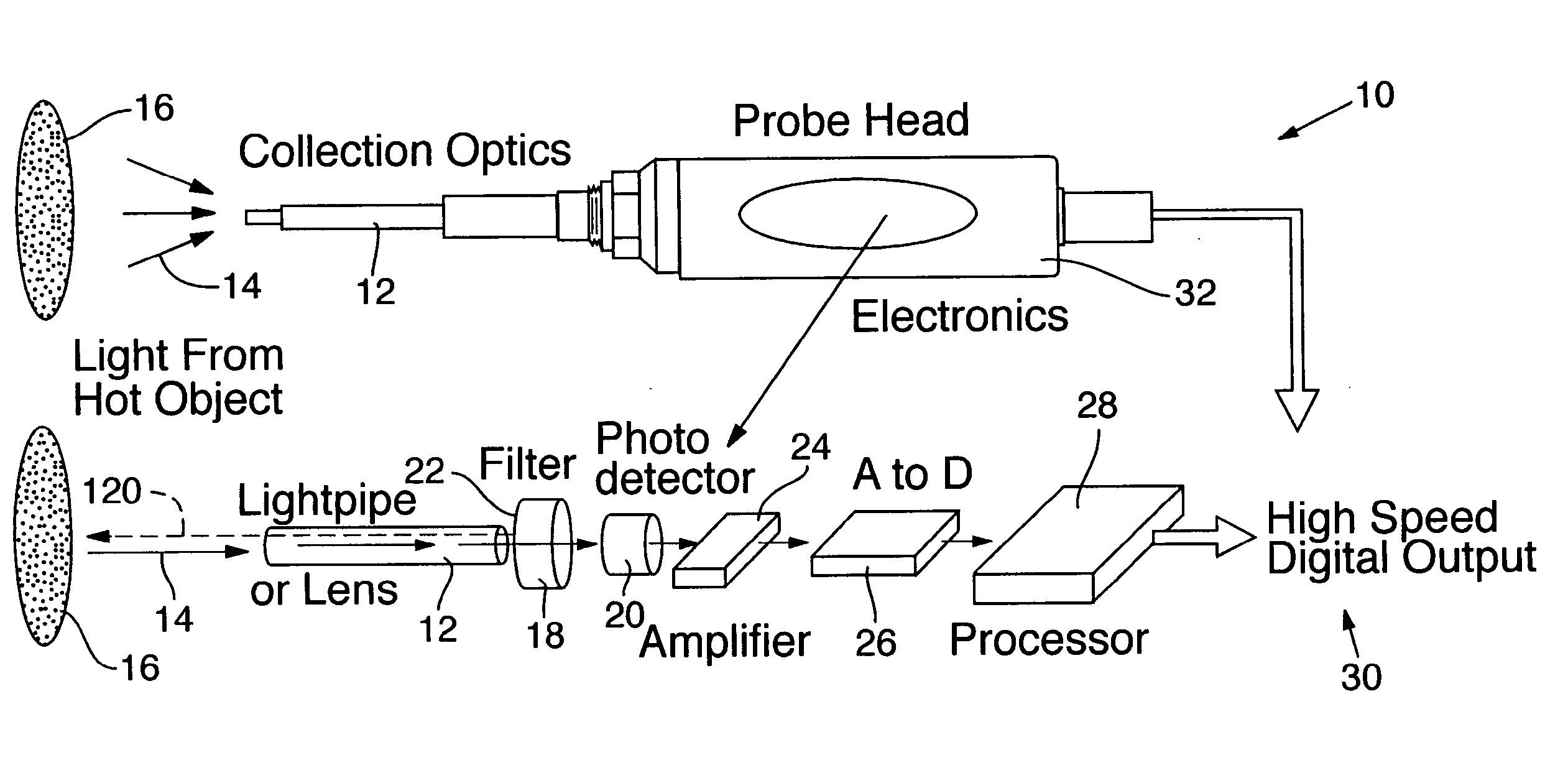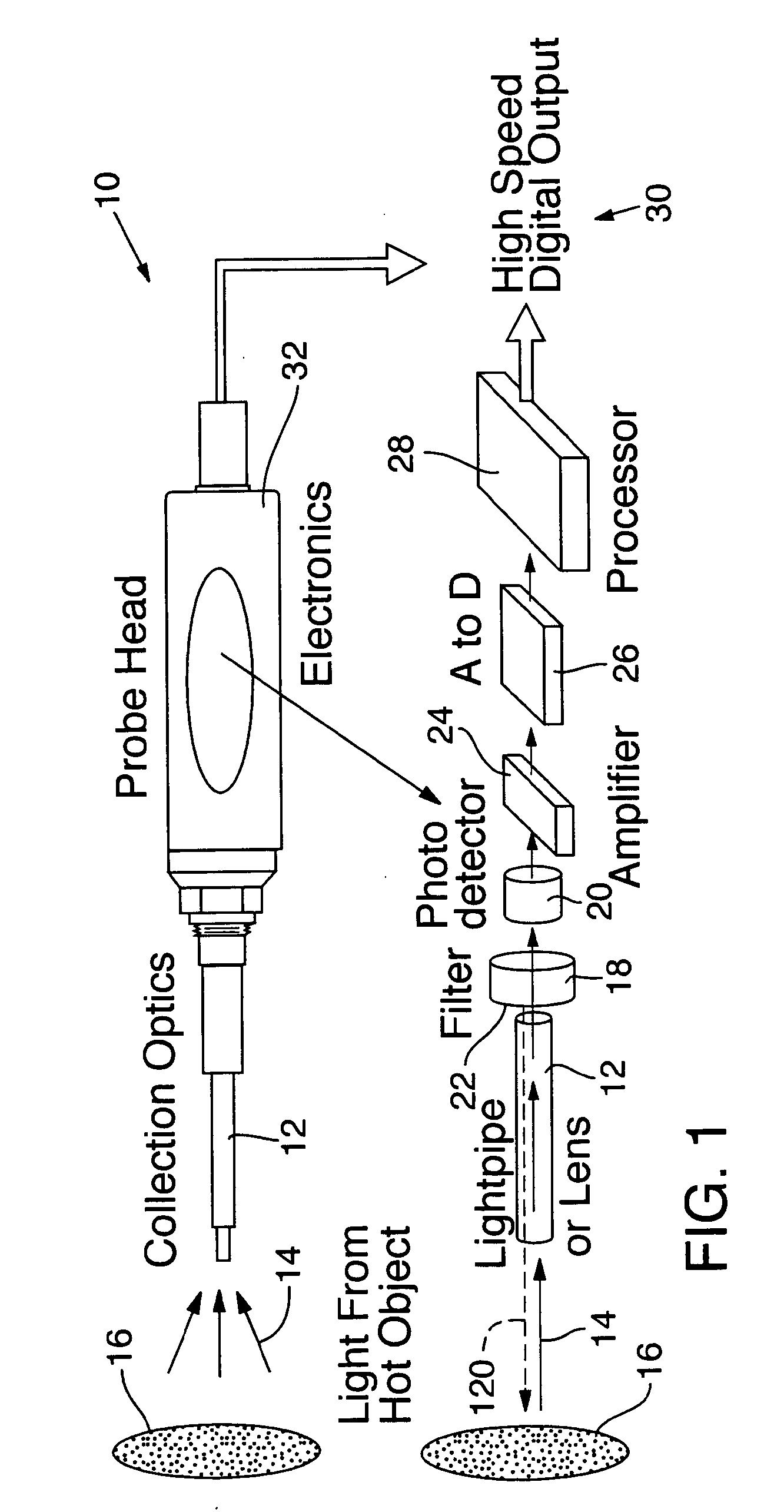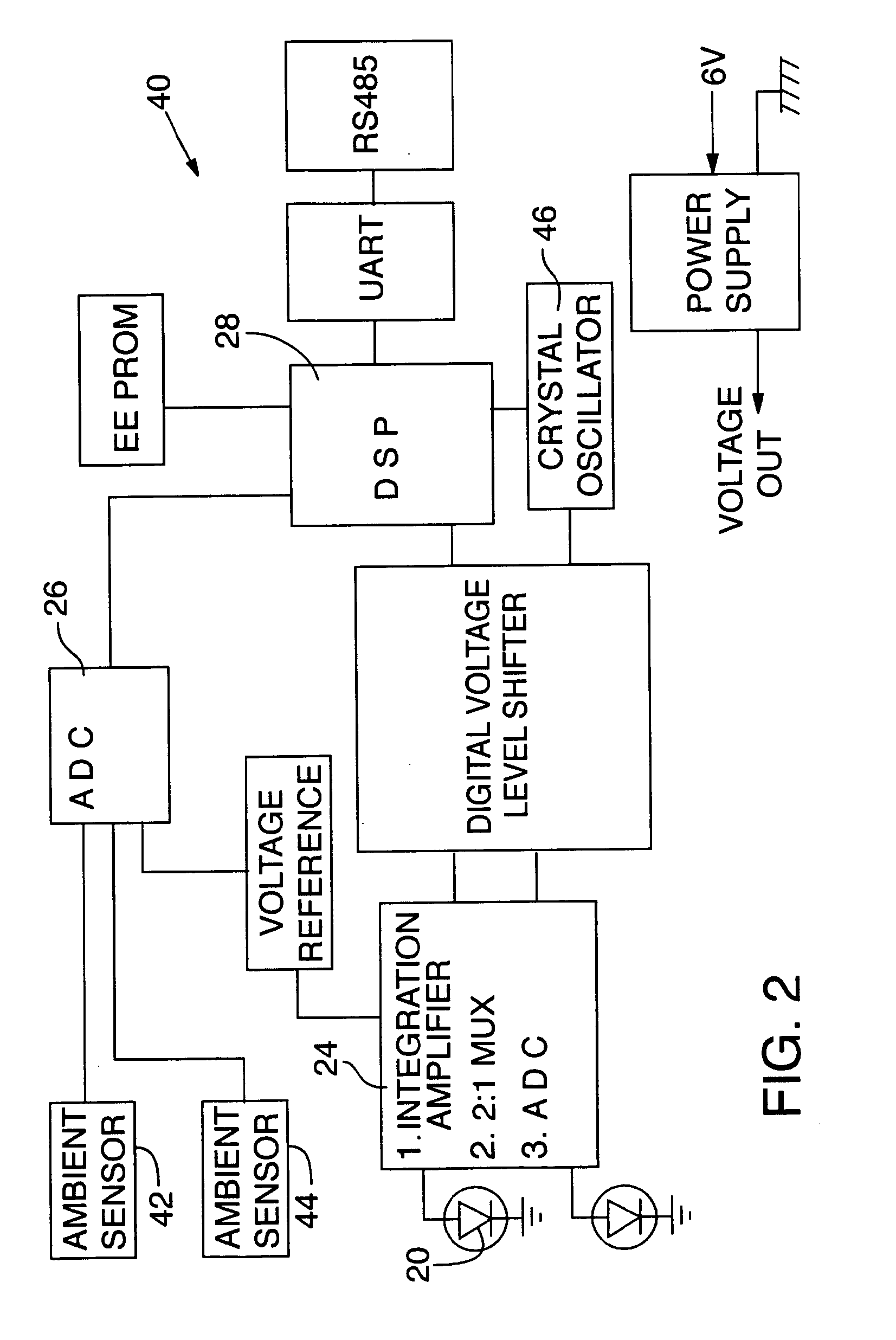In-situ wafer parameter measurement method employing a hot susceptor as radiation source for reflectance measurement
a hot susceptor and measurement method technology, applied in the direction of optical radiation measurement, muffle furnace, furnace, etc., can solve the problems of reducing fabrication yield, wafer temperature control during processing, and increasing the requirements for wafer-to-wafer repeatability, so as to improve signal-to-noise ratio, reduce optical losses, and improve the effect of background radiation blocking
- Summary
- Abstract
- Description
- Claims
- Application Information
AI Technical Summary
Benefits of technology
Problems solved by technology
Method used
Image
Examples
example
[0137] A horizontal transporter 196 moves semiconductor wafer 160 by its peripheral margins into position above and spaced apart from hot susceptor 162 by the distance of gap 190, which typically ranges from about 2.54 cm (1.0 inch) to about 0.0254 mm (0.001 inch). Note that horizontal transporter 196 does not substantially block the surface of wafer 160 from hot susceptor 162 or radiometric system 10. As wafer 160 is moved horizontally into position, cool semiconductor wafer 160 emits some emitted radiation 198, which is sensed by radiometric system 10. Emitted radiation 198 is initially small and increases when semiconductor wafer 160 is heated during subsequent lowering toward hot susceptor 162. Before lowering semiconductor wafer 160, emitted radiation 174 from hot susceptor 162 that is reflected by semiconductor wafer 160 as reflected radiation 192 provides a baseline radiation measurement for comparing with measurements taken during the subsequent downward motion of semiconduc...
PUM
 Login to View More
Login to View More Abstract
Description
Claims
Application Information
 Login to View More
Login to View More - R&D
- Intellectual Property
- Life Sciences
- Materials
- Tech Scout
- Unparalleled Data Quality
- Higher Quality Content
- 60% Fewer Hallucinations
Browse by: Latest US Patents, China's latest patents, Technical Efficacy Thesaurus, Application Domain, Technology Topic, Popular Technical Reports.
© 2025 PatSnap. All rights reserved.Legal|Privacy policy|Modern Slavery Act Transparency Statement|Sitemap|About US| Contact US: help@patsnap.com



